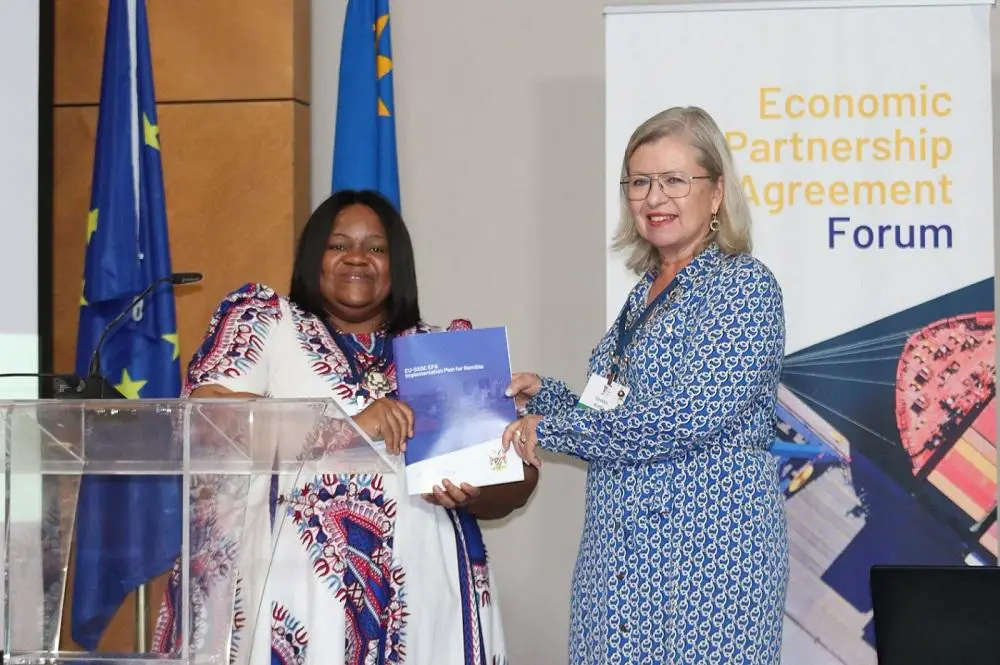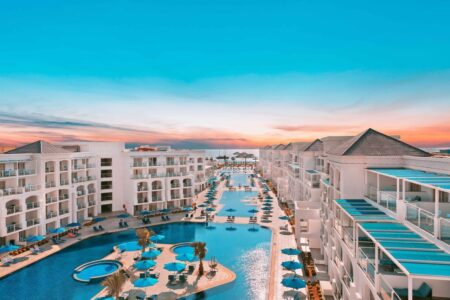The Namibian minister of industrialisation and trade, Lucia Iipumbu, launched an economic partnership agreement (EPA) implementation plan at the Southern African Development Community (SADC)-European Union EPA Trade Forum at the Windhoek Country Club Resort on Monday.
The event was co-hosted by the European Union (EU) delegation in Namibia under the theme ‘Towards Increased and Diversified Trade under the EPA by Ensuring Inclusivity, Sustainability and Economic Growth’.
“The EPA Implementation Plan for Namibia which we are also launching is geared towards attaining the objectives of the SADC – EU EPA and ensuring that the potential benefits that can accrue from it are fully utilised by the intended beneficiaries, which include exporters, importers, consumers, and the entire business fraternity,” she added.
- The Minister of Industrialisation and Trade officiated the SADC-EU Economic Partnership Agreement (EPA) Trade Forum and jointly launched the EPA implementation plan in Windhoek.
- The EPA provides duty-free, quota-free market access into the EU for exports from partner states like Namibia, subject to rules of origin and adherence to international and regional quality standards.
According to Iipumbu, the Namibian EPA Implementation Plan was developed with the support of financial assistance from the EU.
Read: Kenya and Rwanda sign EU’s EPA deal in Belgium
“We are further happy to note that the Plan is being implemented with the support of the EU through a Financing Agreement between National Planning Commission and the EU Delegation. The launch of the implementation plan and its implementation was postponed due to the COVID-19 pandemic interruptions,” she said.
According to the statement, the Forum will have several interactive engagements and presentations focusing on opportunities for Namibian and EU traders, agriculture and agro-processing, manufacturing, and trade facilitation and logistics.
The ministry of trade serves as the coordinator for the plan’s initial goal, which is to provide improved coordination and cooperation across institutions and organizations addressing areas related to EPA implementation.
It is also concentrated on establishing and enhancing the performance of important institutions involved in EPA implementation.
Making a case for technical support to strengthen the necessary legal, institutional, and infrastructure frameworks for Namibia’s EPA implementation is the third point of emphasis.
The EPA provides duty-free, quota free market access into the European Union for exports from partner states like Namibia, subject to rules of origin and adherence to international and regional quality standards.
Namibia and five other SADC member States, namely Botswana, Eswatini, Lesotho, Mozambique and South Africa signed the EPA in June 2016, which provisionally came into force in October 2016. It was fully implemented after Mozambique submitted its instrument of ratification on January 25, 2018.
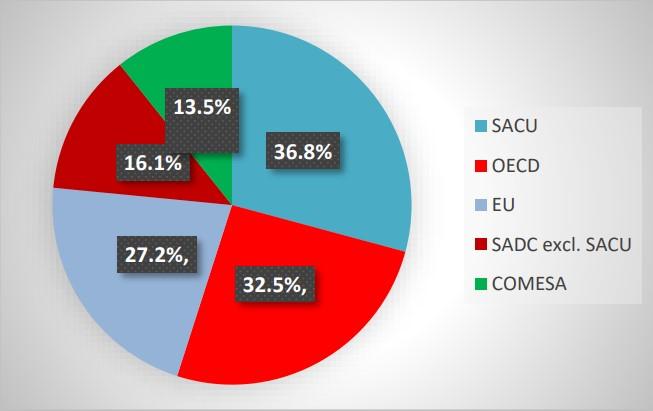
H.E. Sinikka Antila, EU Ambassador to Namibia noted that Europe and Africa are facing unprecedented socio-economic challenges, but also opportunities, which can only be tackled collectively by engaging public and private sector, development partners, financial institutions and civil society amongst others.
“Similarly, in terms of mobilizing resources, the demand is so huge that we need to deploy various financial instruments such as grants, technical assistance, concessional loans, blending and guarantees to manage this. The Global Gateway is EU’s contribution to narrowing the global investment gap, “she said.
According to Namibia ministry of finance – EPAS recent quarterly economic update, Namibia’s trade balance registered a deficit of N$4.2 billion for July. This is a worse-off performance compared to the trade deficit recorded in 2021 during the same month which was only N$ 3.5 billion. The higher trade deficit stemmed from total import that rose by 60.1 per cent in July on an annual basis from N$7.2 billion recorded in July 2021 to N. (www.srmfre.com) 5 billion, while exports grew by 99.6 per cent from N$ 3.6 billion to N$ 7.2 billion under the same period- however still lower than imports.
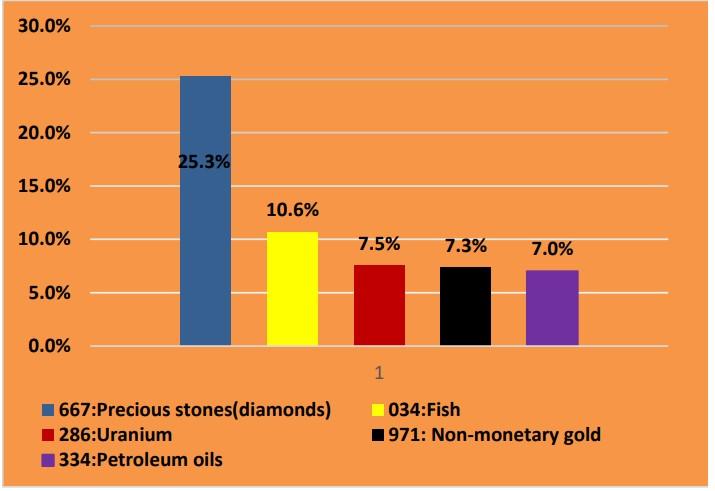
On the monthly basis, export earnings declined by 14.8 per cent to N$7.2 billion in July from N$ 8.5 billion in June 2022. The monthly decline was buoyed by decreases in the value of export of uranium down by 54.4 per cent to N$ N$652 million, precious stones-diamonds up by 12.0 per cent to N$250 million, fish down by 28.2 per cent to N$ 301 million, while Ores and concentrates of base metals decreased by 40.9 per cent to N$78 million. For the month of July, the top 5 export products were precious stones (diamonds), as top exported product followed by fish, uranium, non-monetary gold, and petroleum oils.
SACU emerged as the largest export destination for Namibia’s goods during the month under review with a 36.8 per cent as a share of total exports (Figure 5). The OECD and EU followed in the second and third positions absorbing 32.5 per cent and 27.2 per cent of Namibia’s total export share, respectively. SACU market absorbed 16.1 per cent of Namibia’s total exports and finally, 16.1 per cent of Namibia’s total exports was absorbed by the COMESA market.
Read: Why President Museveni turned down EU’s deal on EPA
For the month of July most of Namibia export was destined for the Botswana market, accounting for 20.5 per cent for the country’s export. South Africa took the second position taking up 19.8 per cent of the export. Followed by China with 10.0 per cent, Zambia and Netherland by 8.8 per cent and 6.6 per cent respectively. These top five export market accounted for 65.7 per cent compared to 49.5 per cent recorded in the same period of previous year. On monthly basis the accumulated export percentage was 10.7 higher in July 2022 compared to 55.0 per cent recorded in June 2022. Namibia exported mostly precious metal to Botswana and South Africa. Fish was destined for the Zambian market and Uranium for China market.
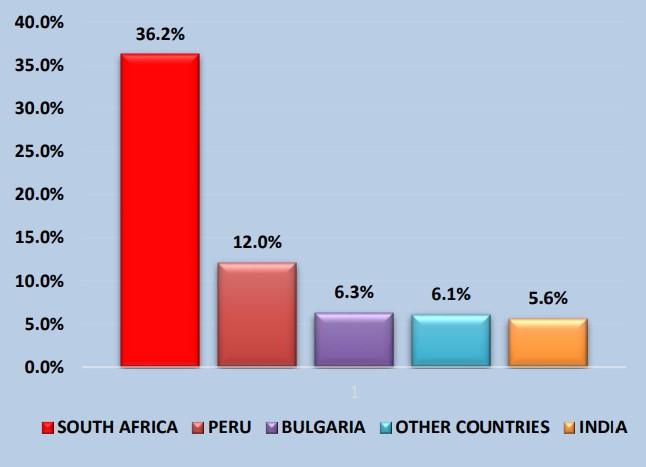
As usual South Africa remained the source of import destination for Namibia taking up 36.2 per cent however lower as compared to 50 per cent recorded in July 2021. Peru took the second position of 12 per cent. Followed by Bulgaria, other countries and India with 6.3 per cent, 6.1 per cent, and 5.6 per cent respectively. All these countries combined provided Namibia with total import amounting to 66.2 per cent, lower than 71.5 per cent recorded in July last year. But an increase in comparison to 62.5 per cent recorded in June 2022.
The EPA holds the potential for significant market access and improvements into the EU for Namibian business operators.





